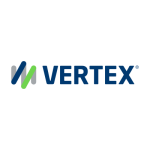If one thing is certain about tech bubbles, it’s that they can easily burst. Currently it is the global software as a service (SaaS) market’s turn to face this challenge. Despite immense growth during COVID, when businesses’ reliance on ‘available anywhere’ technology exploded, a potential recession and other market factors leave SaaS businesses scrutinising the ability of their operations to survive.
There are over 30,000 SaaS companies in the world. The UK’s SaaS market alone was valued at €7.5 billion (approximately $8.3 billion) in 2020, and is expected to double by 2025. Seventy per cent of all software in the world is now SaaS and organisations with at least 1,000 employees typically use a staggering 288 SaaS applications.
However, market saturation, inflationary pressures, and the end of the COVID-fuelled SaaS ‘sugar rush’ are collectively contributing to an uncertain future. According to Software Equity Group, as of August 2022, “public SaaS company valuations declined 53% YOY to 7.1x EV/Revenue”.
Of course, this does not mean the end of SaaS as we know it. While some companies might go to the wall, for many it means the health of their operations and soundness of their business models must be watertight to ride the risks while times are hard.
Trading growth for profit and the impact on customer expectation
Traditionally, investor-backed SaaS businesses have focused on top-line growth over profit – growth being the primary way to attract investment. However, in an uncertain financial landscape, SaaS companies may rebalance these priorities, moving from ‘stack it high and sell it cheap’ to maximise their growth, to quality and value. In turn, this may raise customer expectations of SaaS, with a greater focus on delivering a seamless experience.
‘Ease of use’ is already a prerequisite for SaaS, but removing friction from the customer experience will be crucial for differentiation in a quality-led business. Aside from financial troubles, SaaS companies operate in a crowded market and are often considered to be commoditised. The customer journey, starting from onboarding, needs to be perfect.
As a provider of indirect tax solutions to SaaS businesses, Vertex is involved in helping SaaS companies to ensure that complex global tax rules do not get in the way of a seamless onboarding process, and that tax charges are transparent to the customer as they buy new services and features within SaaS platforms.
One example of this is VAT ID validation for B2B sales. The validation of registered businesses' VAT IDs in real time allows SaaS platforms to trigger the B2B VAT reverse charging mechanism, ensuring they portray competitive pricing with 0% VAT applied at point of sale and avoid triggering a complex VAT refund process for each B2B sale.
Easing the growing pains of rapid global growth
The ubiquity of SaaS products means that, compared with companies with more traditional business models, SaaS vendors often scale globally very quickly from a relatively small base. For their size in employee terms, they often command much larger revenues and achieve global customer acquisition more easily than traditional bricks-and-mortar business models.
This often creates complexity around what began as a simple ‘repeat sale’ business model, as the business finds itself with a globally dispersed customer base, with often low customer interaction due to largely digitalised sales, marketing, and customer support.
While not an issue at healthy times, if left unaddressed, these growing pains can catch up with SaaS businesses. Although they may have found it easy to acquire and onboard customers, with competition rife, it is just as easy for those customers to ‘offboard’ themselves if they are not happy.
A decade ago, the ability to sell to anyone in the world, from anywhere, gave SaaS businesses rich pickings. However, since around 2015, tax regimes around the globe have seized the opportunity to charge indirect tax (for example, VAT) on digital sales in their jurisdiction. Given their often relatively small size and limited financial and tax capability, some SaaS businesses can be overwhelmed by the compliance requirements driven by their global models and scale; tax liability being key, given there are now over 80 digital cross-border tax regimes worldwide.
Distributed business models come back to bite
SaaS businesses have taken advantage of distributed business models as they have grown; for instance, companies headquartered in the UK, but with development teams in other countries and distributed cloud hosting at locations around the world.
While a distributed model serves the SaaS business well, keeps costs competitive and ensures customers can be served in any location, it also adds more management complexities, which could lead to operations being more costly to manage, impacting the bottom line at a time when the business is desperate to protect it. There is a disparate workforce to manage and different employment rules to consider, as well as a longer list of third-party service provider service-level agreements to keep an eye on; not to mention geopolitical issues which could further impact performance.
A globally distributed business also raises questions over tax compliance and can create unexpected indirect tax liabilities. As the rules affecting indirect tax evolve globally, questions are raised over where a digital product or service is sold from, as well as where it is sold to. Does it come from where the business HQ is, or where the product is developed, or where the data centre serving that customer is?
The South Dakota v Wayfair US Supreme Court case in 2018 broke new ground over the concept of tax nexus. Previously, indirect tax was based on ‘physical nexus’ only; in other words, a selling business was only required to collect sales tax if it had a physical presence in the state where the transaction occurred. The case introduced the concept of economic nexus, adding complexity to tax decisions and opening the door for tax jurisdictions everywhere to rethink the laws surrounding when and where indirect tax needs to be collected.
SaaS businesses that are global by nature with their distributed business models could be at the mercy of more tax legislation, adding complexity and cost to the business at a time when they can ill afford it.
Savvy enterprise customers will demand more than just a SaaS product…
Confident buyers will be aware of the changing market dynamics and demand more from SaaS providers than a simple vanilla product. Certainly, at the enterprise level, where SaaS purchases are a procurement-led decision, there will be a keen eye on value added and a hunger for exceptional customer success to maximise the return they get from their investments.
SaaS businesses need to think more broadly about how they differentiate and retain their ‘stickiness’ with the customers that are most important to them. This includes specialist functionality around indirect tax and consultative support for internal customer finance teams that may lack specific digital tax expertise. If SaaS is a high price tag for the business, the finance team will be sensitive to the associated taxes due and how it can best and most effectively manage these, free from compliance issues or unexpected liabilities.
… but savvy SaaS providers will review their pricing strategy
Price increases are, perhaps, inevitable. Key SaaS business costs include energy for hosting and data centre power, and people with sought-after skills such as sales and software development. Those costs, alongside a keener eye on profit, could drive up SaaS product prices. However, in a saturated market desperate to hold on to customers, pricing could be a race to the bottom.
Either way, it is likely we will see some disruption of SaaS pricing models and this will mean more variation in how products are paid for by customers, such as usage-based pricing and monetisation re-engineering.
Dynamic pricing models, and more varied payment schedules and methods, could add complexity to the financial transactions between SaaS businesses and their clients. Per-use versus monthly subscriptions may massively increase the number of points of sale. Upfront payment discounting and deferred payments could also create many price variants. This could leave the transaction records of a SaaS business a far cry from the single fixed-price monthly subscriptions they are used to and drive a need for real-time financial management.
In the area of indirect tax, it is not ideal for companies to manage tax on a ‘collect it and work out the difference at year end’ basis. Indirect tax has become so much more complex that it pays to be able to calculate it accurately in real time, per transaction, and ensure that liabilities, and cash flow, are transparent at all times. For SaaS companies facing many tax regimes, there is a risk of building a bank of customer overpayments that go unnoticed and cause financial friction at year and quarter ends.
More complexity around the corner?
These issues alone show that SaaS businesses are facing more than the burst of an investment bubble. The rapid growth of the sector has left a trail of issues which, on top of a financial downturn, apply pressure to now stressed businesses.
And, as we see a future of flexible working continue for many, the complexity around where a SaaS business is serving its customers will increase. Effectively, its customers (or users) could be anywhere. From an indirect tax perspective, this could add further complexity; some tax regimes are now looking at more sophisticated ways of tracking customer location using their IP address, credit card registration, physical address, and mobile number location. The potential for friction in the customer process, unless addressed, is increasing and is likely to mean more tax liabilities, not fewer.
Of course, tax is only one of the issues SaaS businesses face but it illustrates how a watertight vessel has never been more important, especially for those that have grown quickly and benefited from a buoyant market but now face a harsher climate.
SaaS providers should underpin their businesses with the tools and systems required to minimise, if not eradicate, friction from customer and finance processes. This should include the use of third-party tax engine software such as that provided by Vertex, designed specifically to integrate with SaaS platforms and digital sellers.
© 2023 Vertex, Inc. All rights reserved. The information contained herein is intended for information purposes only, may change at any time in the future, and should not be relied upon in making purchasing, legal, or tax decisions.












